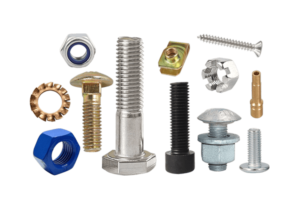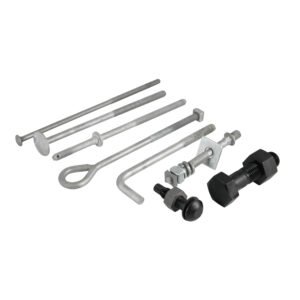When you’re working with pressure-treated wood, choosing the right screw is crucial. The chemicals used to treat the wood can quickly corrode ordinary screws, leading to structural failure and costly repairs. So, what’s the best type of screw for the job?
For pressure-treated wood, use hot-dipped galvanized, stainless steel, or coated screws to prevent corrosion and ensure durability. These materials resist the chemicals in treated wood, extending the structure’s lifespan.
Using the wrong fastener can mean a short lifespan for your project and potential safety hazards. Let’s dig into what makes these screw types ideal for pressure-treated wood and why a few extra dollars spent on the right screws can save you headaches in the long run.
Types of Screws Best for Pressure-Treated Wood
1. Galvanized Screws
Galvanized screws have a zinc coating that helps them resist corrosion. Among the types of galvanization, hot-dip galvanizing—where screws are dipped into molten zinc—offers the thickest, most robust coating.
Hot-dip galvanized screws are built to resist moisture and the harsh chemicals often used in pressure-treated wood, like ACQ and CA. They’re a solid choice for outdoor projects where exposure to the elements is common. Compared to stainless steel, galvanized screws are more budget-friendly, making them ideal for large projects like decks and fences. The thick zinc coating on these screws offers a durable layer of protection, which means they last longer even under tough outdoor conditions.
While galvanized screws are great in many environments, they may not offer the same level of corrosion resistance as stainless steel, especially in extremely harsh or coastal environments.

2. Stainless Steel Screws
Stainless steel screws contain chromium, which makes them naturally resistant to rust and corrosion. They are especially suited for wet or chemically exposed environments, making them ideal for pressure-treated wood projects.
Stainless steel screws, especially grades 304 and 316, are excellent at resisting rust and corrosion, handling exposure to both moisture and chemicals better than most other metals. They also last longer than galvanized screws, making them ideal for coastal or humid areas where conditions are tough on materials. Plus, stainless steel screws keep their clean look over time, as they don’t stain or rust, which is a great advantage for projects where appearance is important.
On the downside, stainless steel screws are more expensive than galvanized screws, and they can be softer, so they might not hold up as well under heavy loads.

3. Coated Screws
Coated screws are often made from carbon steel and treated with a polymer or epoxy coating to make them resistant to corrosion. This makes them another viable choice for pressure-treated wood applications.
Compared to most other metals, stainless steel—particularly grades 304 and 316—handles moisture and chemicals well. It also lasts longer than galvanized screws, even in places with high humidity or near the coast. Additionally, stainless steel screws keep their clean look over time, as they don’t stain or rust, which is perfect for projects where appearance is important.
One limitation of coated screws is that lower-quality coatings can wear off over time or be damaged during installation, making the screws vulnerable to corrosion.

Screw Drive Types for Pressure-Treated Wood
Choosing the right drive type can make installation much easier, especially if you’re handling a large project.
Square and Torx (Star) Drives drive types provide a better grip than traditional Phillips heads, reducing the risk of stripping and allowing for a smoother installation with higher torque. Square and Torx drives are both excellent choices when working with pressure-treated wood, especially for outdoor projects.
Recommended Screw Length and Size for Pressure-Treated Wood
Selecting the appropriate screw length is crucial to ensure that the fasteners provide adequate support without splitting the wood.
For deck screws, the typical range is between 2 ½ inches and 3 inches, depending on the thickness of the material you’re fastening. These lengths help ensure the screw penetrates enough to hold securely without risking damage to the wood.
Choosing the right size and length based on your project requirements will ensure the structure’s longevity and stability.
Factors to Consider When Choosing Screws for Pressure-Treated Wood
When choosing screws, think about the specific environmental conditions and project requirements. Here’s a quick rundown:
- Budget: Galvanized screws are more cost-effective for moderate conditions. Stainless steel is the better choice if you need the best corrosion resistance, but it comes at a higher price.
- Location: For coastal or humid environments, stainless steel or high-quality coated screws are essential. If you’re building in a dry area, galvanized or coated screws can be sufficient.
- Application: Coated screws are ideal for chemically treated woods where resistance to specific preservatives is necessary. However, ensure the coating is of high quality to avoid early wear and tear.
Selecting the appropriate screw type can extend the life of your project and maintain its structural integrity for years.

Conclusion
Choosing the right screw for pressure-treated wood isn’t just about cost—it’s about ensuring the safety and longevity of your project. By investing in the right material and coating, you can protect your structure from corrosion, reduce maintenance, and save time and money in the long run.
Looking for durable, high-quality screws for your next project? Contact us at info@hrfastener.com or visit our website to explore our selection of fasteners!






